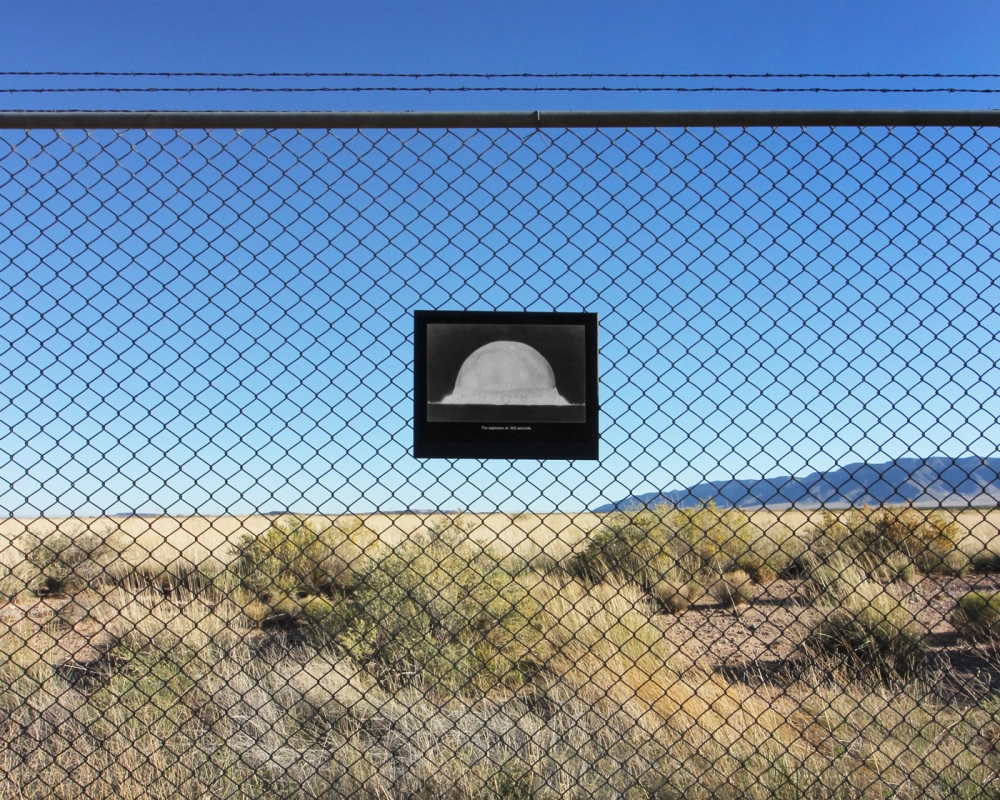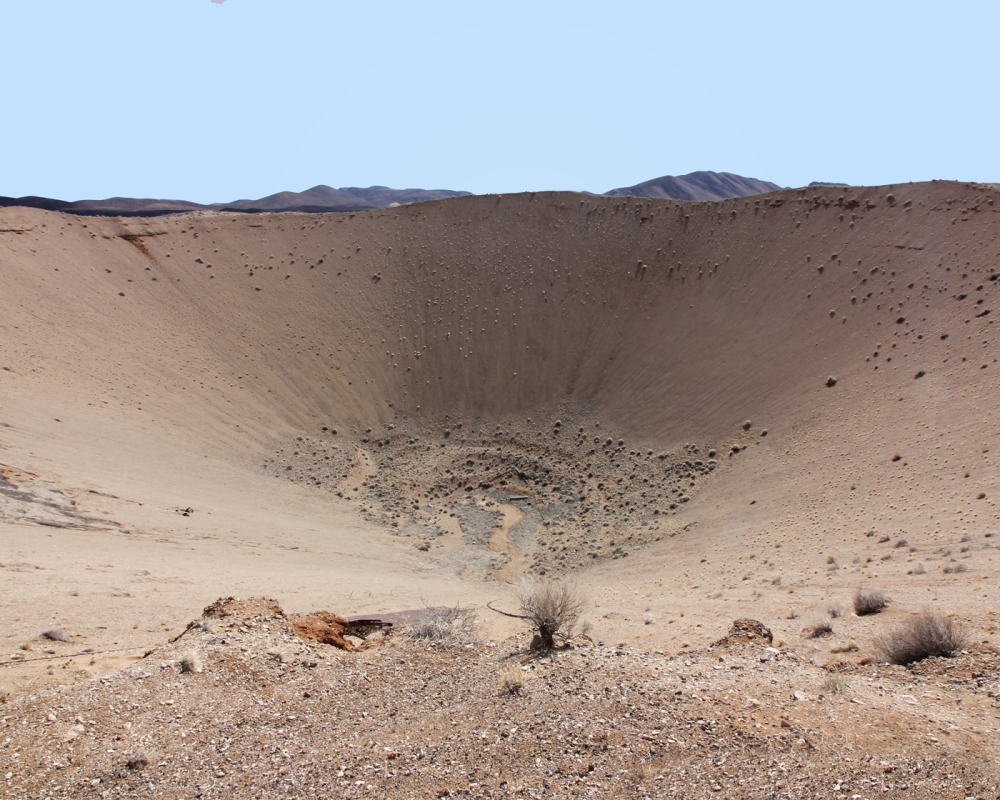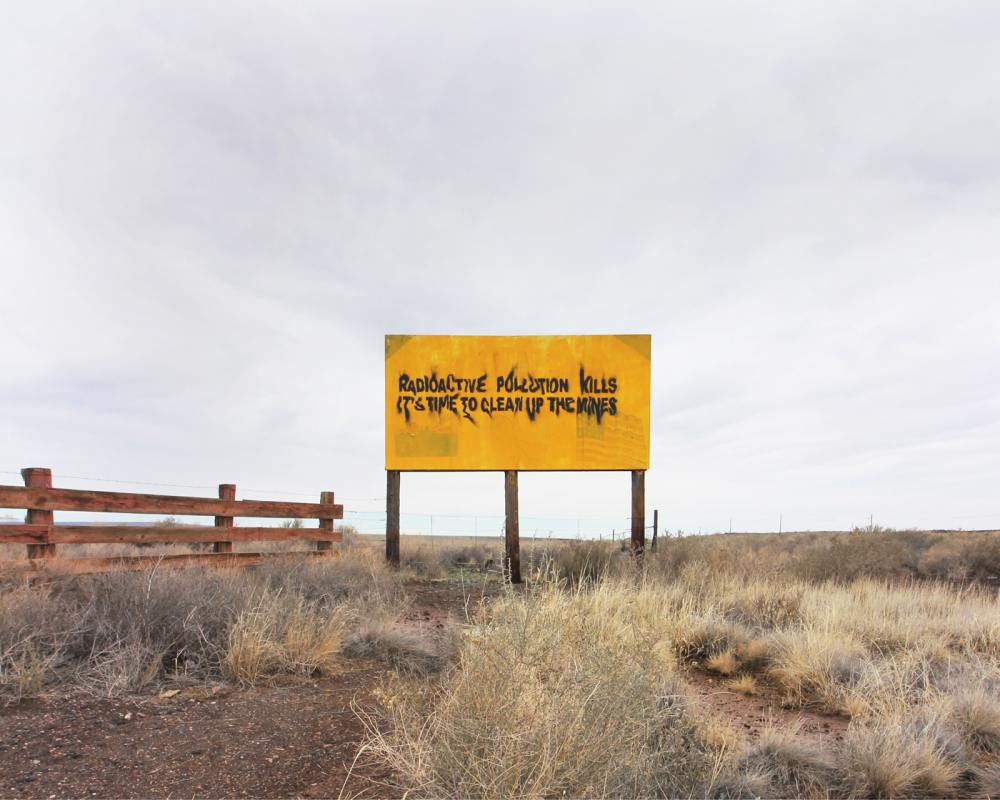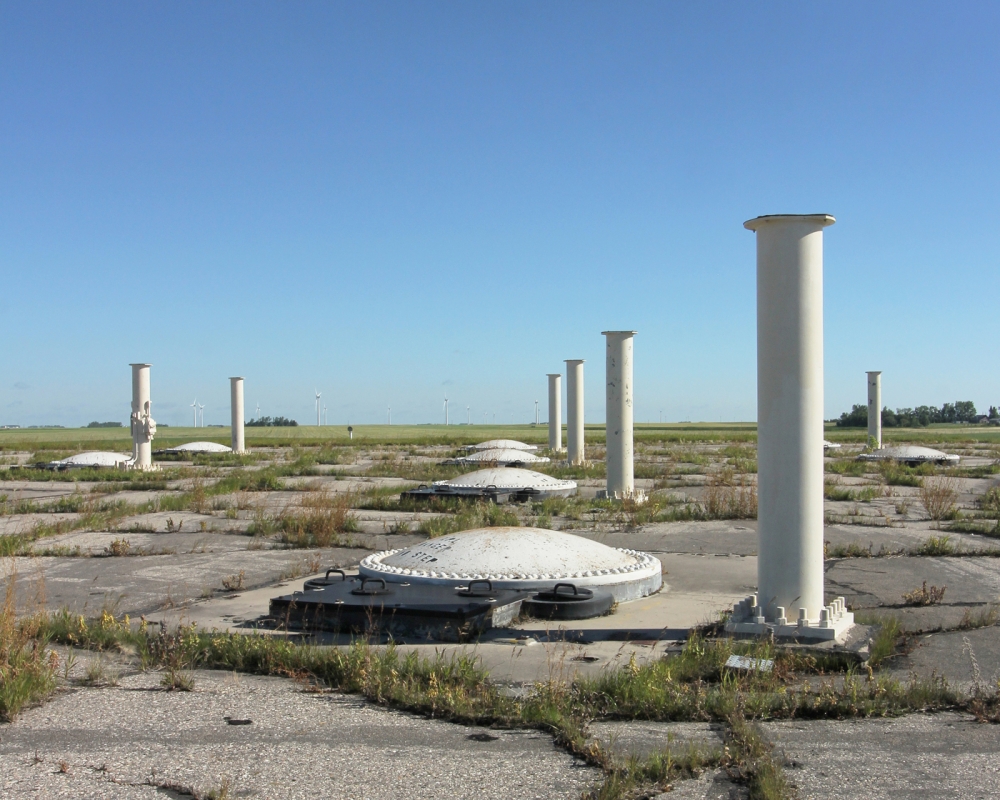Nuclear Landscapes is a series that documents topographies across the United States associated with atomic energy. Nuclear chain reactions were hypothesized in 1933, and the first artificial self-sustaining nuclear chain reaction took place in December 1942. The Trinity test and subsequent bombings of Hiroshima and Nagasaki that ended World War II represented the first large-scale use of nuclear technology. They ushered in profound changes in sociopolitical thinking and the course of technology development.
At the time, atomic power was promoted as the epitome of progress and modernity, but with it came the threat of nuclear warfare and disasters.
Much of the development, testing, and disposal of nuclear material in the United States has taken place in the west. Abandoned uranium mining towns, decaying atomic test sites, old nuclear reactors, and decommissioned nuclear missile bases are strewn across the western landscape and stand as an eerie testament to a period of time that was meant to revolutionize civilization.
professional category
Nuclear Landscapes (Series)
DESCRIPTION
AUTHOR
Brett Leigh Dicks is an American photographer who shares his time between the United States and Australia. His photographic endeavors have led him to explore the world's natural and urban landscapes with the resulting imagery spanning Australia, America and Europe. In employing the tradition of fine black and white photography, Brett primarily investigates the landscape and the fragile ties that it shares with human history. Highlights of his extensive career include the group exhibition "Arcana Naturae" which toured Europe for five years featuring the collected works of Imogen Cunningham, Alfred Ehrhardt, Albert Renger-Patzsch, Josef Sudek and Sugimoto. In Australia, "On the Street", a joint exhibition with mentor and friend Lewis Morley, was a prestigious event featuring their individual takes on street photography. Another honor was taking part in the "The Voice of the Print" exhibition as it drew together photographers who were also noted print-makers and had Brett's work hanging reverently beside that of Ansel Adams. His work is held in both private and public collections the world over.
back to gallery







